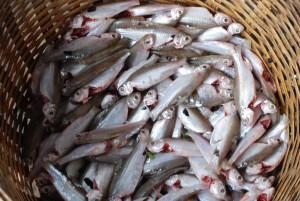John Sabo, a visiting researcher from Arizona State University, will be presenting this week’s roundtable! He will be telling us about his work in the ecologically and economically important Mekong River Basin. We will be continuing the climate change theme from last week’s talk, but moving onto its impacts on fisheries instead. He will also discuss how dams have impacted the river and fisheries.
Abstract: Inland capture fisheries on the Mekong River provide a majority of the animal protein and vitamin A to the diets of over 40M people in the Lower Mekong River Basin. The productivity of this fishery is fueled by the monsoon flood pulse which creates wetlands the size of small US states in Cambodia and Vietnam. The region is experiencing rapid development, including the planning and impending construction of over 20 hydropower facilities, some already built. Climate change will also likely change the intensity and timing of the South Asian Monsoon, with implications for the extent of the ensuing flood pulse and the fishery that depends on it. In this roundtable I will address two topics. First, I present the results from a century scale analysis of change in hydrologic variation and key aspects of the flood pulse on the Mekong River including an assessment of current dams. This analysis is done within a novel spectral framework that allows for identification of baseline stationarity and decomposition of the linear, seasonal and stochastic components of change in daily discharge. Second I link spectral measures of hydrologic variation to catch data from the fishery using a 15-year dataset of the Dai fishery on the Tonle Sap River (Cambodia) and a second time series approach—a multivariate autoregressive state space (MARSS) model. The spectral-MARSS framework is then used to forecast the fishery under near time climate change. Daily discharge variation and key aspects of the flood pulse have been experiencing natural change for over a century. Existing dams have modified discharge in spite of a shifting baseline. Fisheries catch varies with several spectral measures of daily discharge variation. Surprisingly, low flows have equal if not higher positive effect sizes than high flows on catch in this flood pulse system and spectral measures outperform “first moment” measures of flood pulse extent. Moreover, antecedent hydrology—the flood drought sequence from the previous 1-2 years—significantly affects current catch in the fishery. These results suggest that the spectral-MARSS framework may provide a robust tool for forecasting fisheries production in the future.

